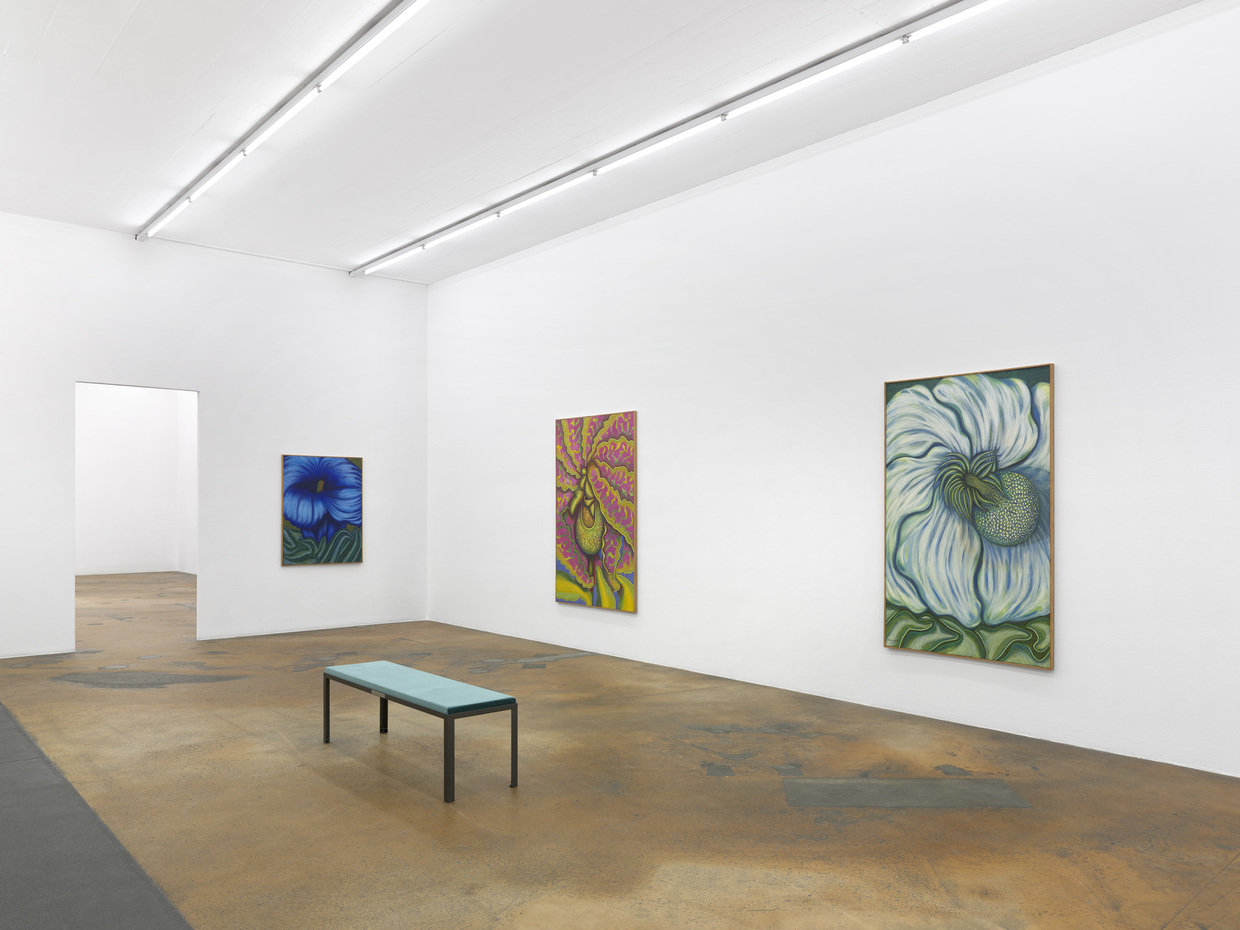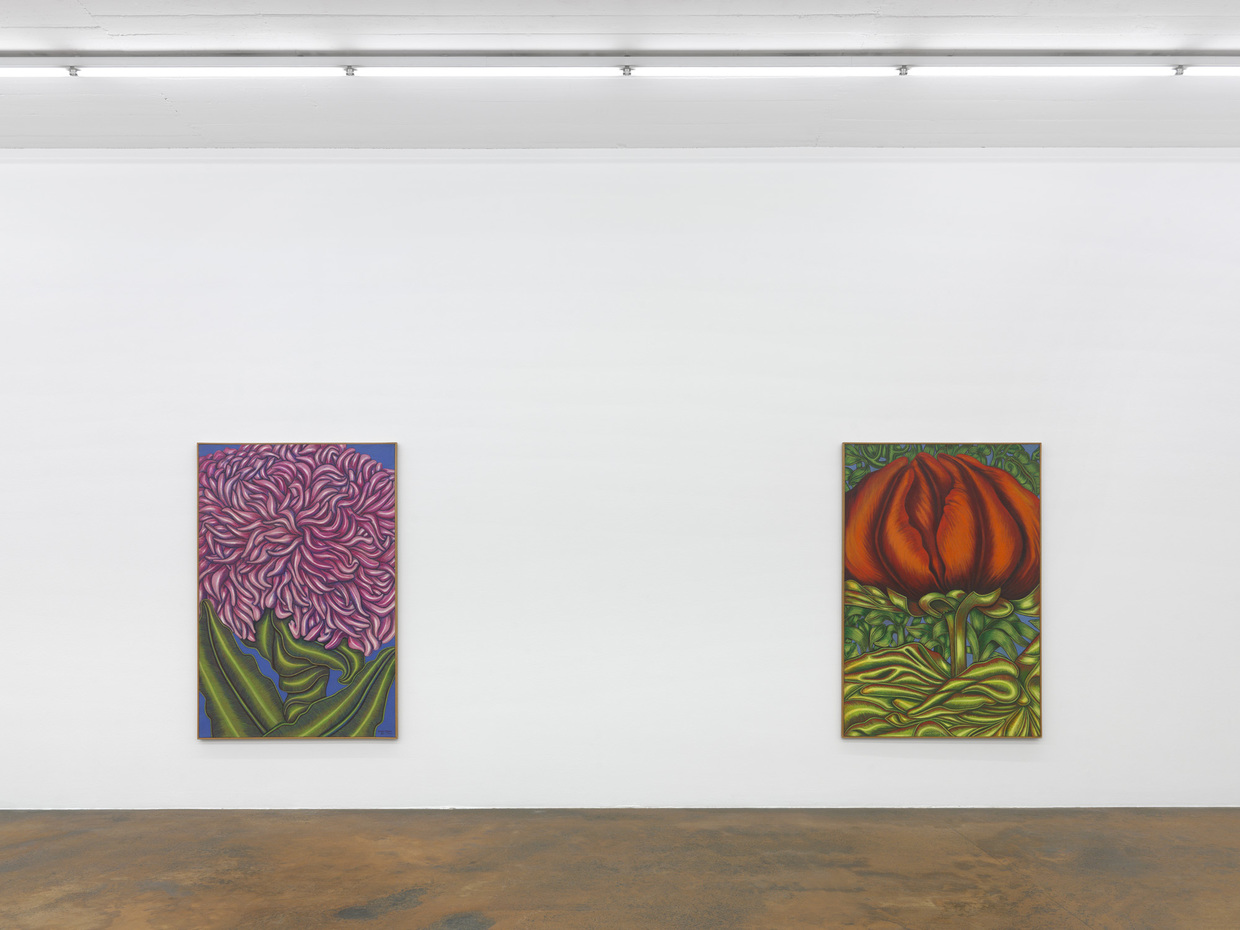Colombian artist Emma Reyes (1919–2003) was largely a self-taught painter. She did, however, spend time studying and working under Diego Rivera and André Lhote, from whom she learned an important life lesson: stay true to what made both her work and her background undeniably unique.
The term “magic realism,” which describes a trend in late 20th-century Latin American fiction, could equally be applied to Reyes’ body of work. In the mid-1950s, she began portraying “Monsters”—part-human, part-animal hybrids—in her paintings, taking cues from Enrico Prampolini and adopting a formal vocabulary that combined elements of post-Cubist and pre-Columbian art. This “animistic” tendency would remain central to her work from this point onward. Some Andean animist societies saw weaving and embroidery as a way of bringing the object of representation to life. Reyes perpetuated this approach in her own fashion: using oft-recurring thread and ring patterns, she instilled in her subjects an animated quality. Far from being fixed, her paintings were infused with organic energy, like moving images on a TV screen.
The MAMCO exhibition features a selection of Reyes’ paintings from the 1980s and early 1990s. This was the period when the artist departed the furthest from Western ideas and adopted a distinctively South American worldview in her work, after flirting briefly—during her time in Rome and Paris—with contemporary “isms” (post-Cubism, Abstract expressionism, Nouveau Réalisme and Kinetic art).
Her early series of Portraits imaginaires (Imaginary Portraits), which appear as if woven in black and white from a kind of primordial material, gave rise, in the late 1970s, to a more flamboyant period in which she drew on her identity, on memories of her journey across Latin America in the early 1940s, and on her time spent in the Paraguayan jungle. Each brightly colored canvas featured the same spidery lines that became a hallmark of her work.
In her paintings, Reyes depicted individuals set among lush vegetation: the human being and the surrounding jungle were as one. In portraying her subjects alongside animals, or with a piece of fruit in their arms or raised to their lips, she sought to tell an ancient story of kinship. But far from calling for a return to the wild, Reyes aimed to reject the anthropocentric worldview and to return humanity to its rightful place, in dialogue with its environment.
Reyes also produced close-up paintings of flowers, fruits, and vegetables, portraying them as living beings. Through her systematic use of tightly framed composition, she endeavored to transform our relationship with the physical world, to bring us closer to nature. Like Georgia O’Keeffe, she forced the viewer to focus intently on the subject. Reyes’ approach—masterful portraits of fruits and flowers that pushed beyond the confines of deliberately undersized frames—set her apart from the formal concerns of her contemporaries. But it allowed her to reconnect with her cultural identity, and to give it full expression in her art.
- Curated by Stéphanie Cottin, with the support of the Pictet Group Foundation and the Brownstone Foundation
- “In 19995, Emma Reyes entrusted the works in her studio as well as her documentation to the Musée d’art et d’archéologie du Périgord in Périgueux, her adoptive city. We are thrilled that the MAMCO, with the help of Stéphanie Cottin, shined light to the work of this remarkable artist.” —Véronique Merlin Anglade, MAAP Director


